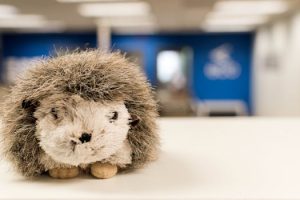Digital Fashion Avatars Replace Traditional Modeling Agencies
The fashion industry is always evolving and adapting to new technologies. With the rise of virtual and augmented reality, the traditional modeling industry is facing disruption. In recent years, the use of digital fashion avatars has been gaining popularity in the fashion world, and it’s quickly becoming a game-changer for the industry. These digital avatars are not just replacing traditional modeling agencies but also revolutionizing the way brands showcase their collections and market their products. In this article, we’ll dive into the world of digital fashion avatars and explain why they are here to stay.
The Rise of Digital Fashion Avatars
Digital fashion avatars, also known as virtual models or virtual influencers, are digitally created characters that are designed to look and act like real human models. These avatars are created using 3D modeling software and are equipped with advanced technologies like artificial intelligence, motion-capture, and voice recognition to give them a human-like appearance and personality.
The first digital fashion avatar, Shudu Gram, was created in 2017 by British photographer Cameron-James Wilson. Shudu gained instant fame in the fashion world and has since been featured in high-profile campaigns for brands like Fenty Beauty and Balmain. This started a trend, and now there are various digital avatars making their way into the fashion industry, including Lil Miquela, Imma, and Noonoouri.
Why Digital Fashion Avatars are Gaining Popularity
There are several reasons why the use of digital fashion avatars is on the rise:
Inclusivity and Diversity
One of the biggest advantages of digital avatars is that they are not limited by physical characteristics. This makes them a perfect representation of diversity and inclusivity, which is a major issue in the fashion industry. With digital avatars, brands can create models of any race, size, and age, promoting inclusivity and diversity in their campaigns and collections.
Cost-Effective
Hiring human models and organizing photoshoots can be expensive for fashion brands. Digital avatars, on the other hand, are a one-time investment that can be used repeatedly without additional costs. This not only saves money for brands but also time and resources.
Unlimited Customization
Another major advantage of digital avatars is the ability to customize them according to the brand’s vision. From facial features to body proportions, clothing options to backgrounds, everything can be tailored to fit the brand’s aesthetic and message. This allows for more creativity and control, ensuring the perfect representation of the brand’s identity.
The Impact on the Traditional Modeling Industry
The use of digital fashion avatars has already started to disrupt the traditional modeling industry in many ways. Firstly, it has opened up opportunities for those who have been underrepresented in the industry, especially diverse and plus-size models. Secondly, it has reduced the need for hiring human models, reducing the demand and potentially leading to job losses in the future.
However, it’s worth noting that digital avatars cannot entirely replace human models. There is still a high demand for real models for runways, events, and campaigns that require a human connection. The use of digital avatars could also lead to more innovative and creative collaborations between humans and virtual models.
The Future of Digital Fashion Avatars
The rise of digital fashion avatars is just the beginning of a technological revolution in the fashion industry. With advancements in technology, we will see more realistic, human-like avatars that are virtually indistinguishable from real models. There is also a growing trend of digital avatar influencers, who have a significant social media presence and influence, collaborating with fashion brands to promote products.
Furthermore, virtual and augmented reality could enhance the use of digital avatars by allowing customers to virtually try-on clothes before purchasing and creating a more immersive shopping experience. This will not only benefit the fashion industry but also the environment by reducing the environmental impact of transportation and waste from producing and disposing of physical clothing.
Conclusion
The use of digital fashion avatars is transforming the traditional modeling industry and making a significant impact on the way fashion is marketed and consumed. With their inclusivity, cost-effectiveness, and unlimited customization, digital avatars are here to stay and will continue to evolve in the future. It’s crucial for fashion brands to embrace this advancement and incorporate it into their strategy to stay ahead of the curve in this ever-changing industry.











